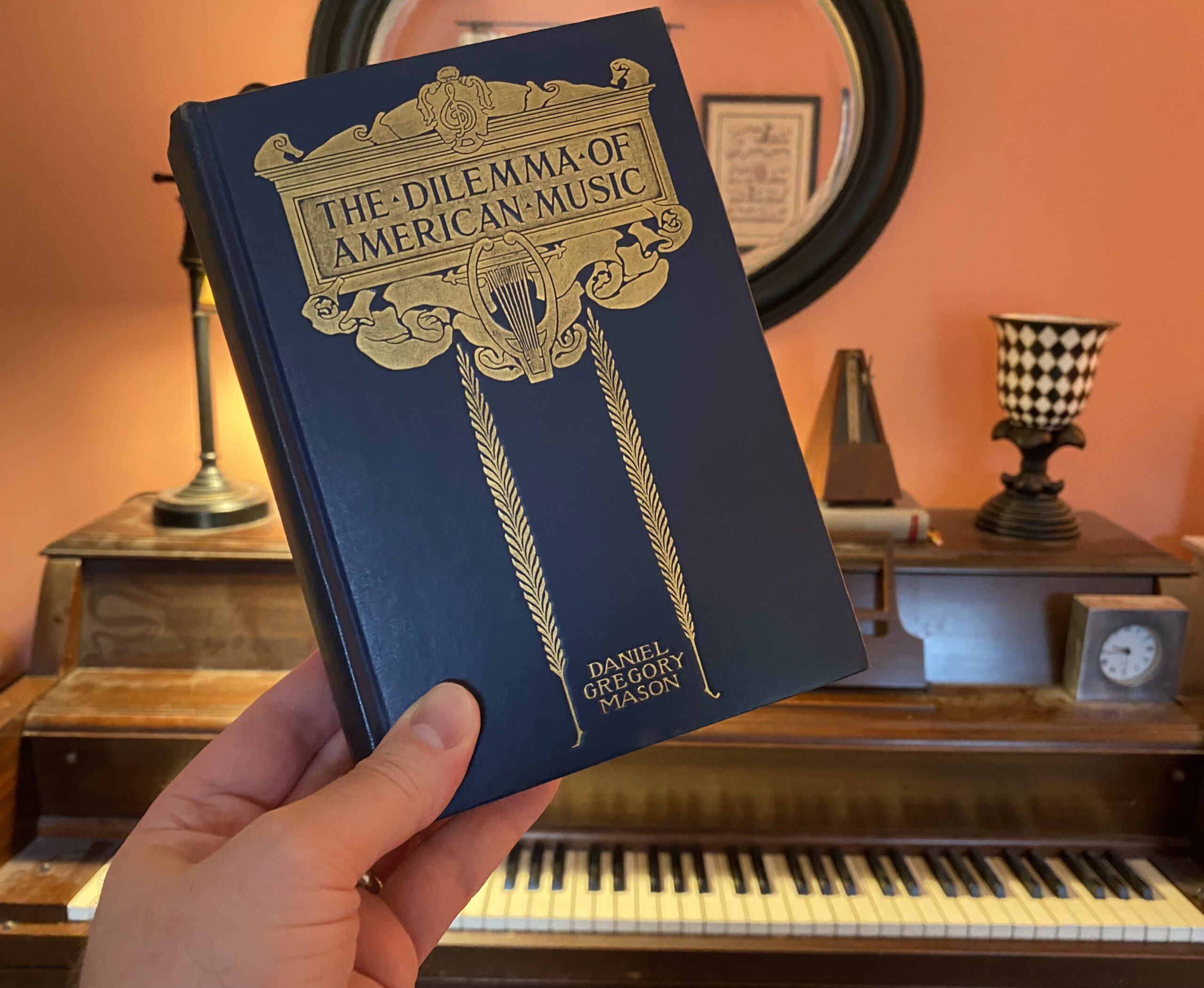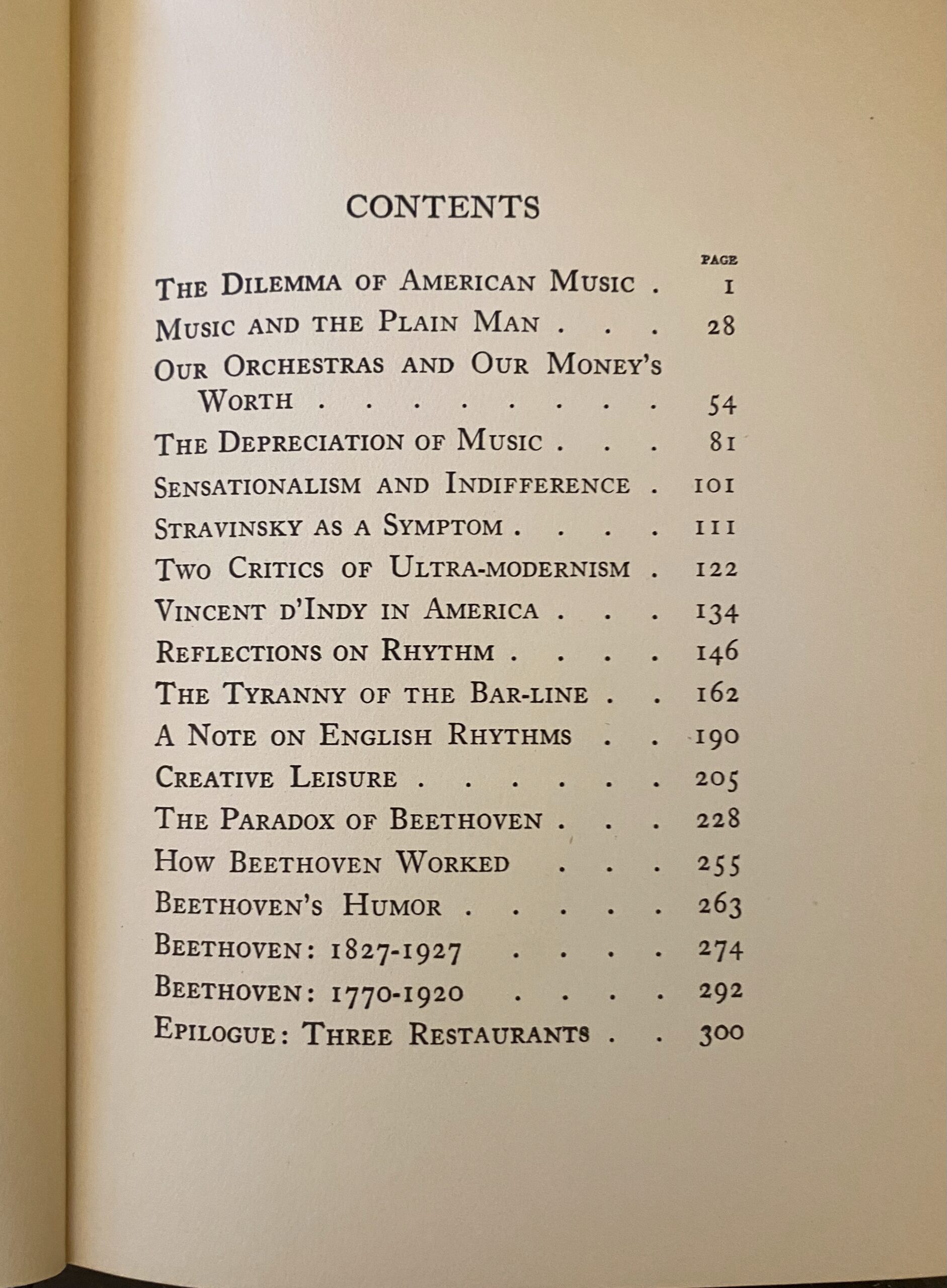- Title: The Dilemma of American Music
- Author: Daniel Gregory Mason
- Publisher: The MacMillian Company
- Estimated year of printing: 1928
Notes:
The author of this book, Daniel Gregory Mason (1873 – 1963), was born in Brookline, Massachusetts. He studied music at Harvard and published his first composition in 1894. Soon after, he became a longtime lecturer at Columbia, and shifted his focus to writing books about music. Many of the books he wrote were critical of modern music.
This is one of those books. It is a series of 17 essays, all of which are centered around harshly critiquing modern music — particular jazz, which had recently gained a great deal of popularity during the “Jazz Age” of the 1920s, and Stravinsky (1882 – 1971), who was controversial at the time but now regarded as one of the most important and influential composers of the 20th century. Positive essays are devoted to pointing out the beauty of music from prior eras, with a special emphasis on Beethoven (1770 – 1827) — 5 of the essays are about the 19th century composer.
Saying that this book is harsh is not an exaggeration, it can only be understood by reading at least some of it:
“Jazz is the doggerel of music. It is the sing-song that the schoolboy repeats mechanically before he becomes sensitive to refined cadence. It is not, accurately speaking, rhythm at all, but only meter, a monotonous repetition of short, stereotyped figures. For precisely this reason it is popular with listless, inattentive, easily distracted people, incapable of the effort to grasp the more complex symmetries of real music.”
The author’s grandfather, Lowell Mason (1792 – 1872) is quite notable in his own right. He composed over 600 hymns, many of which are still sung today. His work includes the most popular and well-known arrangements of Joy to the World and Nearer, My God to Thee. He is also considered one of the early pioneers of music in U.S. public education.
Historical context:
With World War I having ended in 1918, the 1920s became a decade of recovery where people looked to music for hope and encouragement, with the younger generation in particular newly focused on faster, upbeat music and dancing as an activity. “Crazy Blues”, performed by Mamie Smith, became the first significantly popular recorded blues song in 1920. Prohibition, which started in 1920, resulted in the proliferation of speakeasies, which became lively venues of the “Jazz Age”. Popular performers such as Louis Armstrong got their start during this era. Because of the association with speakeasies, jazz was controversial, but by the 1930s jazz was considered mainstream and had given rise to other genres such as swing and big band.



